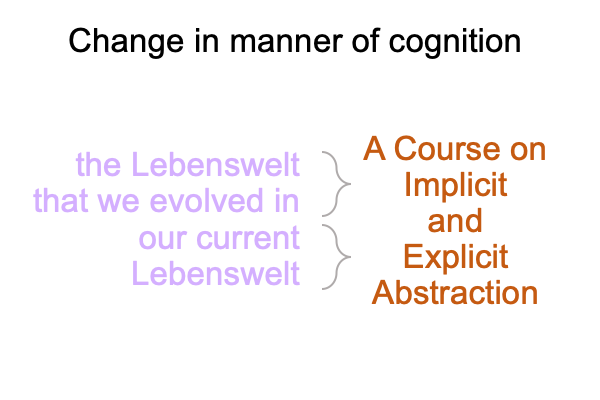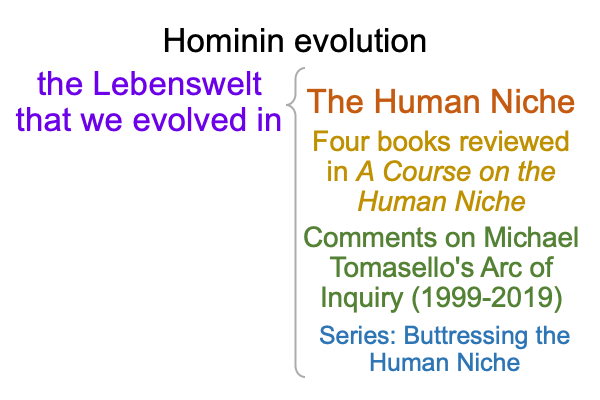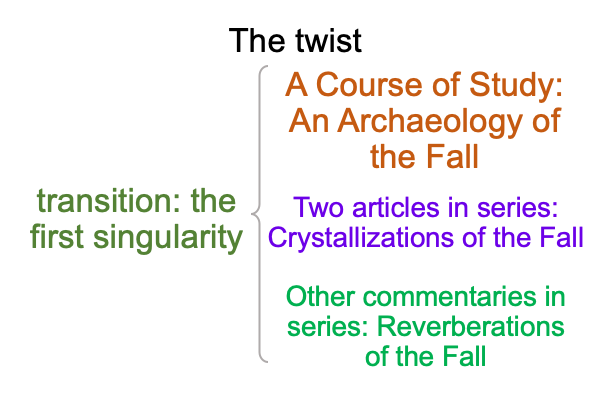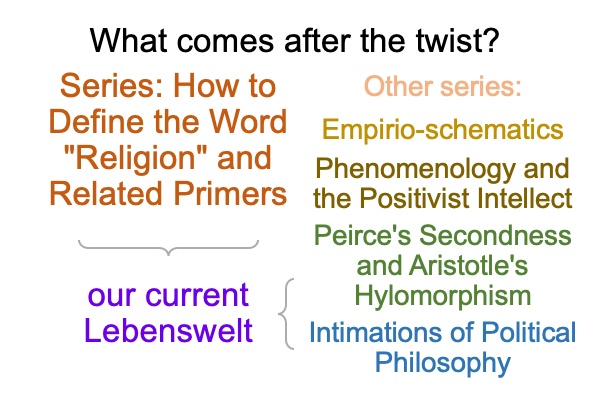Adam and Eve and Original Sin: The Subject Matters (Part 2 of 2)
AEOS 0011 Yes, there is more.
Here is another online course on the same subject matter. All parts appear in Razie Mah’s blogs. Click on the month, then scroll downwards.
0012 These are sample courses. So, one may pick and choose points and reviews as one pleases.
Plus, there are lots of pictures. Pictures can be interesting and informative.
How so?
For the most part, the pictures are diagrams of purely relational structures.
0013 What am I selling?
Three online courses that cover the topic of human evolution. All are offered by Razie Mah. All are available at smashwords and other e-book venues. Merely purchase the e-books, print the pdf or read on a tablet. Each point can be discussed. The texts are designed to read and discuss.
A Course on the Human Niche contains the masterwork, plus four commentaries. This course introduces the Lebenswelt that we evolved in.
A Course on An Archaeology of the Fall, contains the masterwork, plus outside reading (Paul’s letter to the Romans and Sura 5). An instructor’s guide is available. This course pertains to the hypothesis of the first singularity.
A Course in How To Define the Word “Religion” contains the masterwork, plus 10 primers. This course concerns our current Lebenswelt, which is not the same as the Lebenswelt that we evolved in. A “how-to” instruction appears in Razie Mah’s blog in December 2022.
0014 With that said, here is the second online course on this topic.
One: Looking at William Lane Craig’s Book (2021) “In Quest of the Historical Adam”
(September 31-1, 2022, 21 blogs, 120 points)
Two: Looking at John Walton’s Book (2015) “The Lost World of Adam and Eve”
(August 30-1, 2022, 22 blogs, 192 points)
Three: Looking at Andrew Kulokovsky’s Overview (2005) “The Bible and Hermeneutics”
(May 27-16, 2022, 10 blogs, 85 points)
Four: Looking at Carol Hill’s Article (2021) “Original Sin with Respect to Science”
(February 25-7, 2022, 15 blogs, 72 points)
Five: Looking at Roy Clouser’s Article (2021) “… Support of Carol Hill’s Reading…”
(March 8-1, 2022, 6 blogs, 34 points)
Six: Looking at Mark S. Smith’s Book (2019) “The Genesis of Good and Evil”
(January 31-13, 2022, 16 blogs, 100 points)
0015 Total: 90 blogs, 603 points, 10 hours at 1 minute per point.
Maybe, this online course lasts around 2 weeks.
Enjoy this sample and consider purchasing Razie Mah’s online courses.




